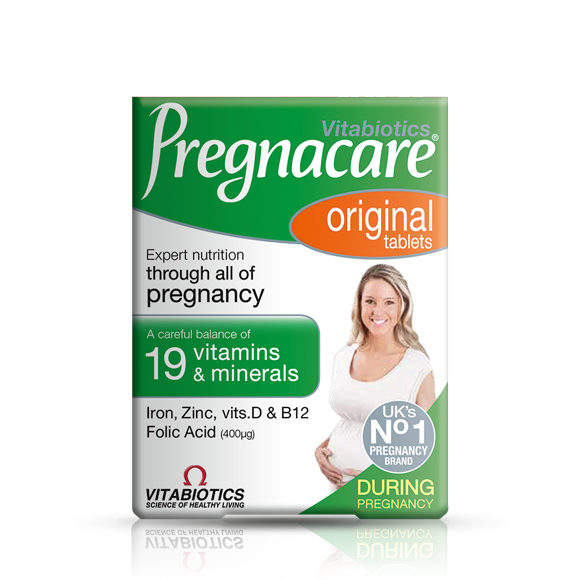What Should I Know About A C-Section Birth?
In both planned and unplanned caesareans, you can still ask for your birth preferences to be considered.
You should be able to have skin-to-skin contact with your baby straight after they are born if that’s what you want, unless there is a medical reason which means this can’t take place.
Questions You May Have About A C-Section
How Long Does A C-section Take?
The whole operation normally takes about 40 to 50 minutes, including removal of the placenta and stitches afterwards.
What Should I Take With Me To The Hospital For A C-section?
In terms of what to take with you to the hospital, you should take items for yourself and the baby and potentially your birth partner too.
Items that can be useful for after a c-section include:
- High-waisted cotton pants or disposable maternity pants (high waisted is more suitable to avoid rubbing your c-section scar).
- Maternity pads – as you will still experience bleeding from your womb, as with a vaginal birth
- Loose-fitting nighties (not pyjamas).
- Anything to make your life easier as your mobility will be limited after due to the pain relief and your scar. For example, baby wipes might come in handy to help you feel fresh. A water bottle might make it easier to keep hydrated
- Your midwife will be able to advise on anything specific that may help reduce nausea or trapped wind (common after c-sections).
Your hospital bag should also include:
- Your folder of maternity notes
- Comfortable, loose clothing to wear when you go home
- Snacks and drinks
- Breast pads and maternity pads for when the baby is here, and a supportive bra to wear while breastfeeding
- Items for your birth partner, including drinks, snacks and a change of clothes
For the baby you will need to bring:
- Clothing (including vests, baby grows and hats as well as an outdoor suit if the weather is cold)
- Newborn nappies
- Cotton wool
- A newborn car seat to go home in, with a blanket
When Can You Go Home After A C-section?
Some women can go home as soon as 1 to 2 days after having a caesarean, depending on if there are any complications.
Recovery From A C-Section
In terms of what to expect from a c-section recovery:
When you are sent home from hospital, you will be offered painkillers to help with any pain and discomfort.
You will need to take things very easy at home. Remember that you have just had a major operation – and have a newborn!
You may need to avoid some activities, such as driving, until you have had your postnatal check-up with the doctor at 6 weeks (speak to your midwife for advice).
What About Giving Birth To Your Next Baby? What’s a VBAC?
If you have already given birth by c-section, if you are pregnant again you will need to discuss with your doctor or midwife about giving birth a second time. This could be via planned caesarean or a vaginal birth, known as VBAC (vaginal birth after c-section).
Our Pregnacare Midwife Says
Our Pregnacare midwife has this advice for anyone who wants to know more about c-sections:
“Don’t let C-sections scare you – as they can often be extremely calming and empowering. We are so incredibly lucky to have the option of a c-section in the UK, whether that’s as an emergency or a chosen elective. I have a few top tips for any c-section. Firstly, ask the anaesthetist in theatre to help place baby skin to skin onto you in theatre as soon as they are born, this is possible and all they would need to do is move a few ECG leads around. Secondly, if you’re planning on breastfeeding it can be difficult to get into the best position for breastfeeding straight after a c section, so don’t be shy to ask for help! The first latch - even if it isn’t painful in the moment - can often be incorrect and cause trauma to the nipple and you’ll feel it during the subsequent feeds, so don’t be shy to ask the midwife or healthcare assistant for help with the first feed, or even help with hand expressing your colostrum into a syringe. Lastly, get up and mobilise as soon as you’re able. The more still we are after a c section, the stiffer our muscles become and the harder and longer the recovery. By moving around, we help send oxygen to the cells of the body and that promotes the healing of any wound. Peppermint water/tea will be your best friend as trapped wind post-surgery is extremely common and can be very uncomfortable so by mobilising and drinking peppermint tea/water this can help to pass any excess wind and prevent that discomfort.”
The content of this blog is not intended to be a substitute for professional medical advice, diagnosis, or treatment. Always seek the advice of your physician or other qualified health professional regarding any medical condition. While every care is taken to ensure the accuracy of the information presented in the blog and to describe best generally accepted current practices we cannot accept any liability for errors or omissions or for any consequences from application of the information given.







Comments (0)